Um Ihnen ein optimales Erlebnis zu bieten, verwenden wir Technologien wie Cookies, um Geräteinformationen zu speichern und/oder darauf zuzugreifen. Wenn Sie diesen Technologien zustimmen, können wir Daten wie das Surfverhalten oder eindeutige IDs auf dieser Website verarbeiten. Wenn Sie Ihre Einwillligung nicht erteilen oder zurückziehen, können bestimmte Merkmale und Funktionen beeinträchtigt werden.
Die technische Speicherung oder der Zugang ist unbedingt erforderlich für den rechtmäßigen Zweck, die Nutzung eines bestimmten Dienstes zu ermöglichen, der vom Teilnehmer oder Nutzer ausdrücklich gewünscht wird, oder für den alleinigen Zweck, die Übertragung einer Nachricht über ein elektronisches Kommunikationsnetz durchzuführen.
Die technische Speicherung oder der Zugriff ist für den rechtmäßigen Zweck der Speicherung von Präferenzen erforderlich, die nicht vom Abonnenten oder Benutzer angefordert wurden.
Die technische Speicherung oder der Zugriff, der ausschließlich zu statistischen Zwecken erfolgt.
Die technische Speicherung oder der Zugriff, der ausschließlich zu anonymen statistischen Zwecken verwendet wird. Ohne eine Vorladung, die freiwillige Zustimmung deines Internetdienstanbieters oder zusätzliche Aufzeichnungen von Dritten können die zu diesem Zweck gespeicherten oder abgerufenen Informationen allein in der Regel nicht dazu verwendet werden, dich zu identifizieren.
Die technische Speicherung oder der Zugriff ist erforderlich, um Nutzerprofile zu erstellen, um Werbung zu versenden oder um den Nutzer auf einer Website oder über mehrere Websites hinweg zu ähnlichen Marketingzwecken zu verfolgen.

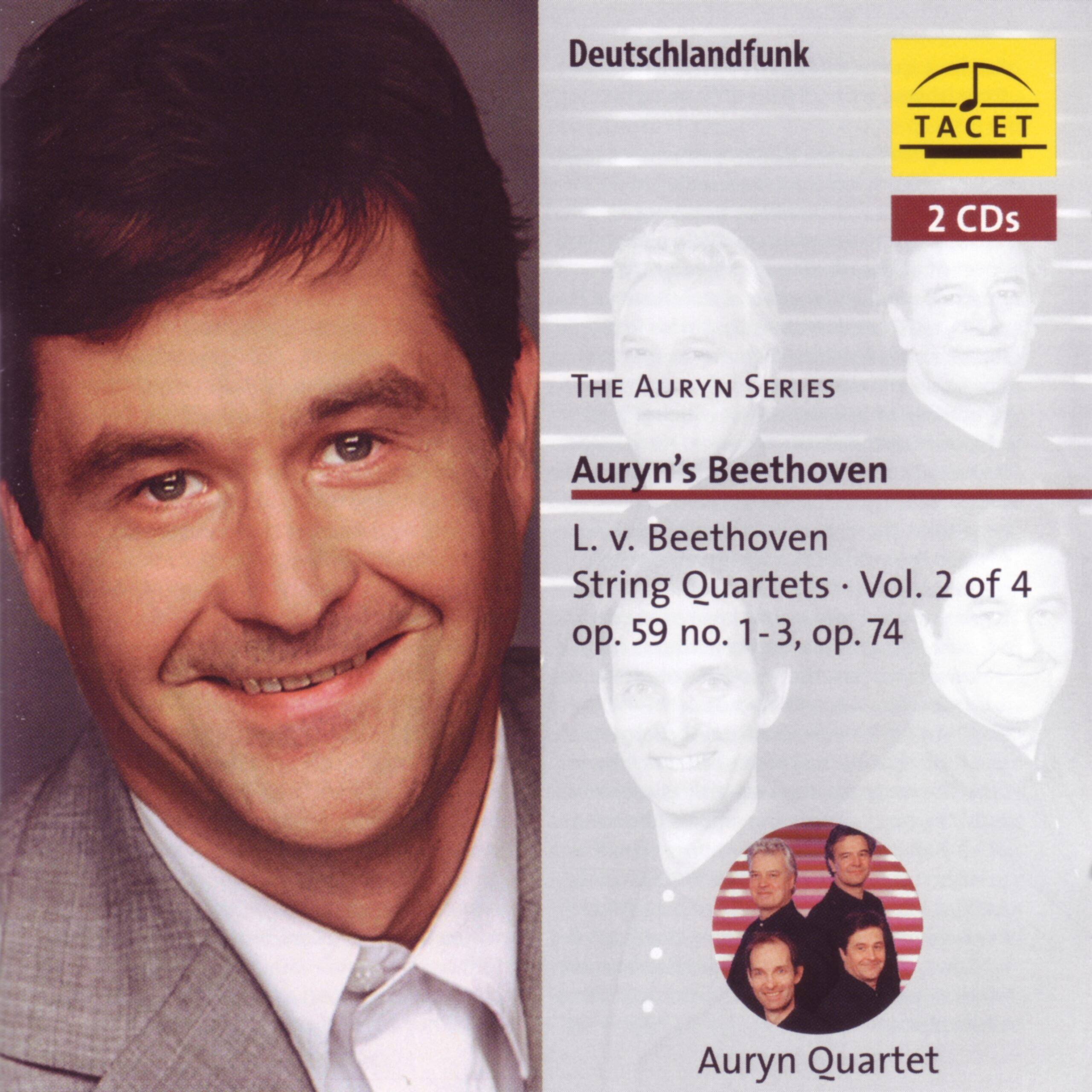
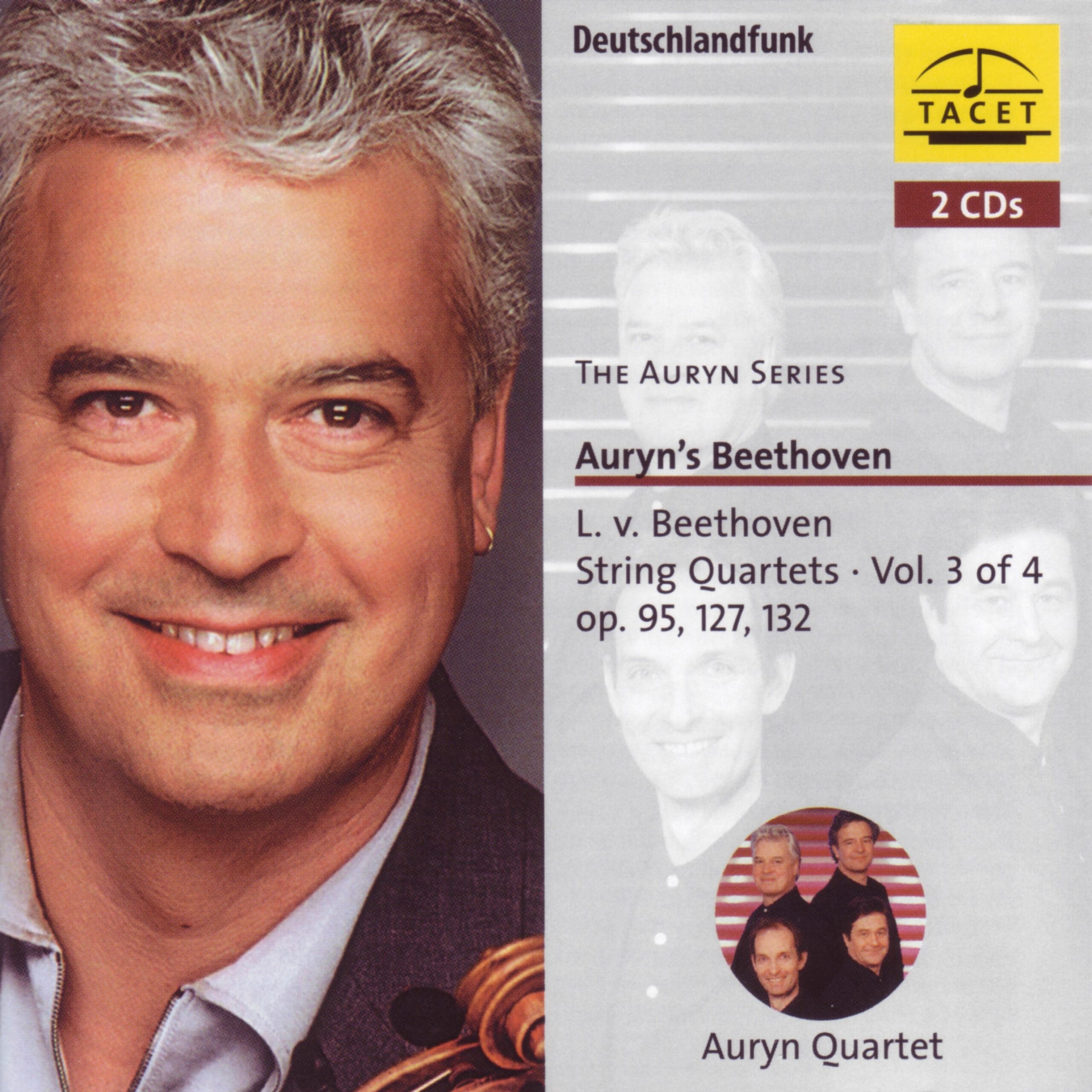
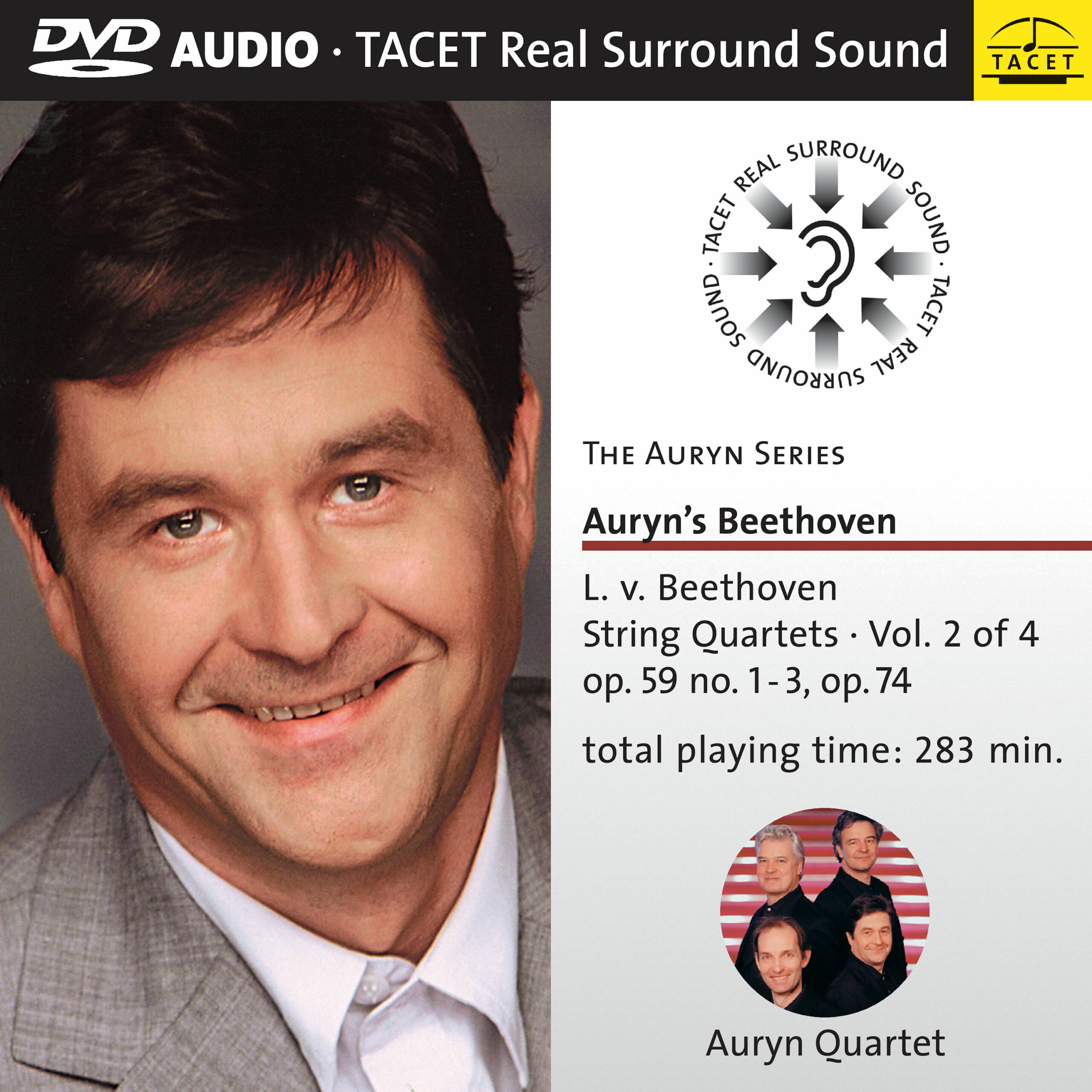
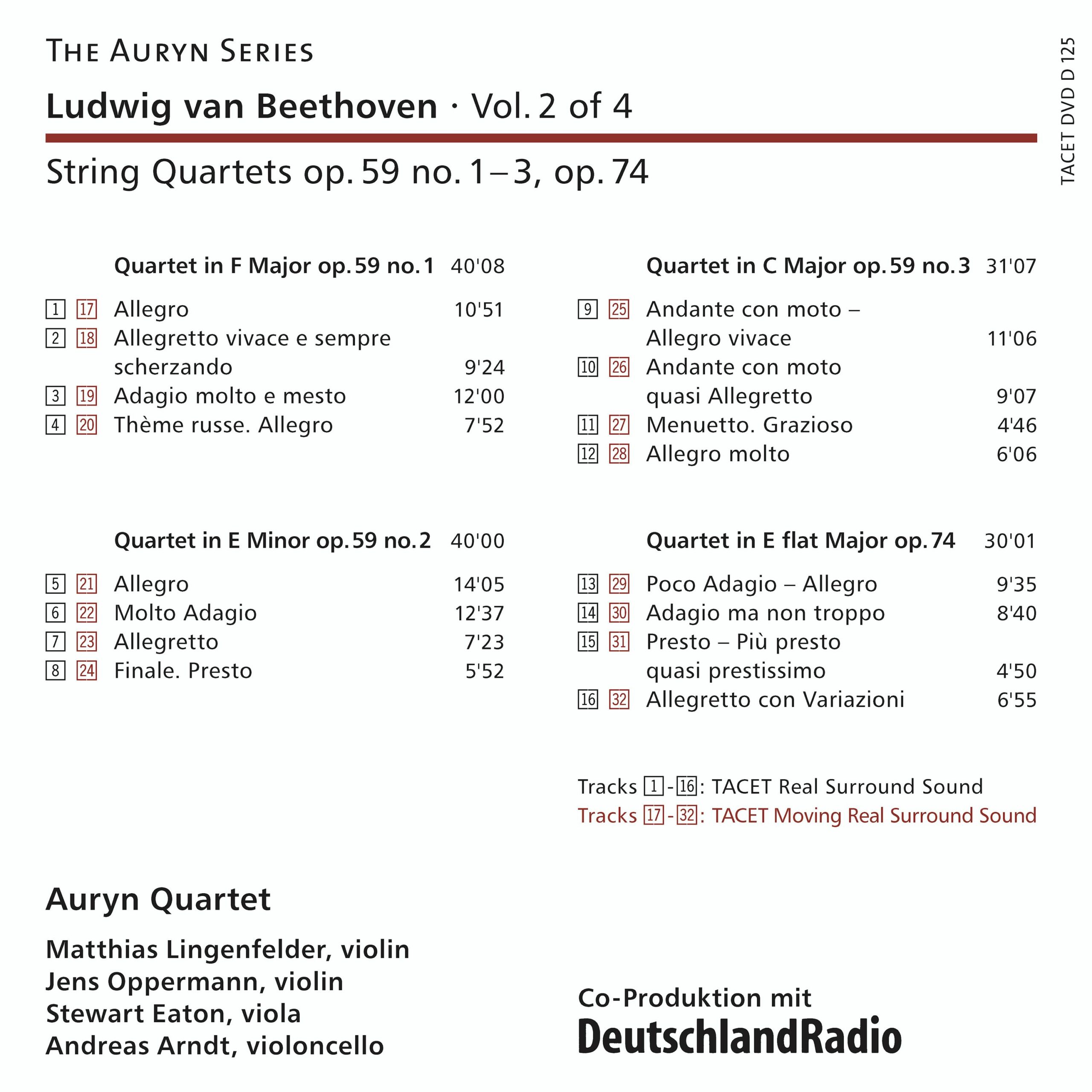
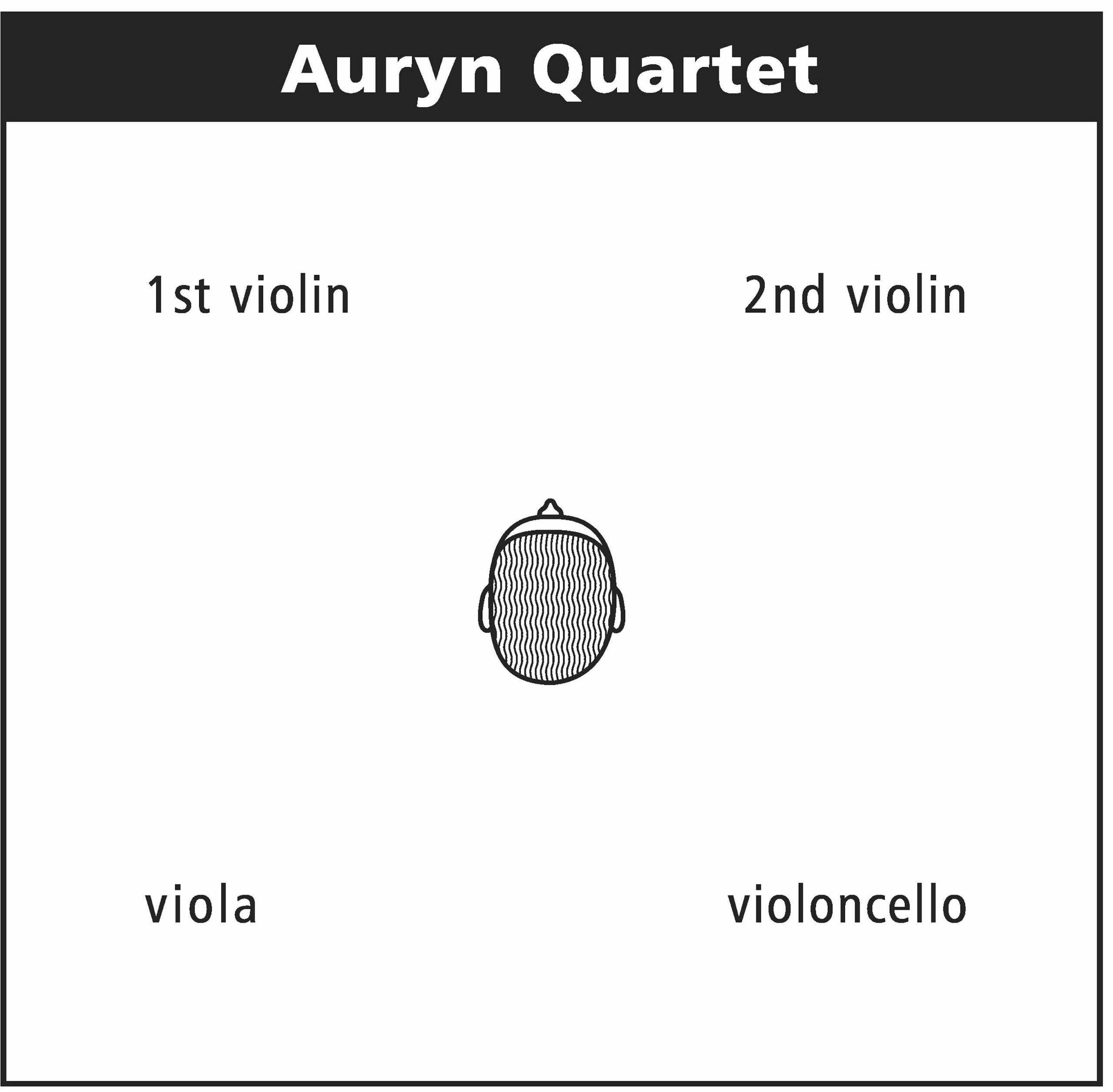
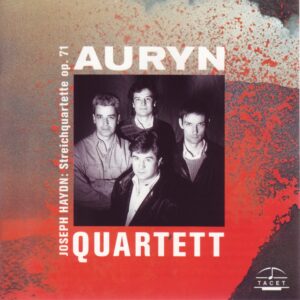
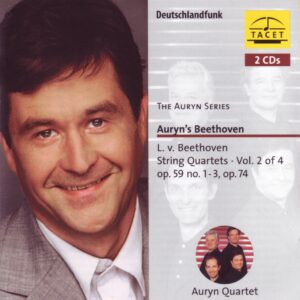
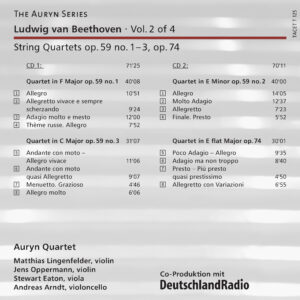
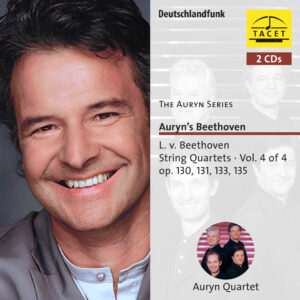
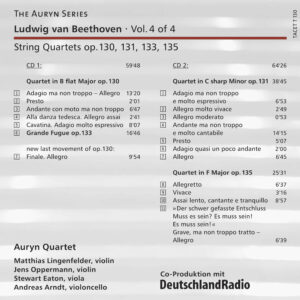
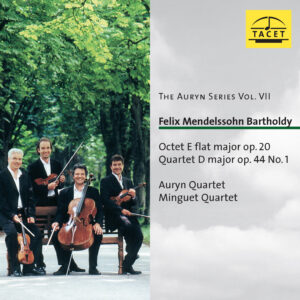
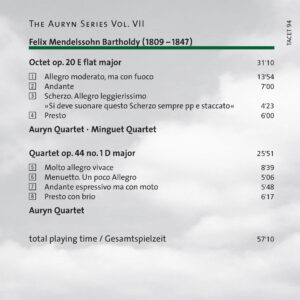

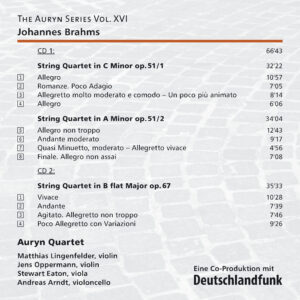
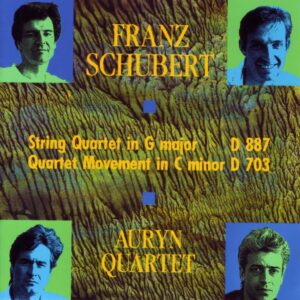
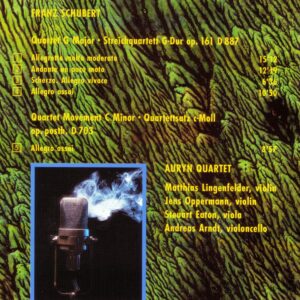
Jean-Marc’s Multi-Channel Recordings Reviews –
As an ex-clarinet player I do not consider myself very knowledgeable in terms of string quartet music. Of course this is a TACET recording so I was expecting the utmost sound quality. Of course it sounds absolutely fantastic! I was also surprised by the musical qualities of the Auryn quartet and their impressive interpretation of the 4 Beethoven’s quartets on this recording. The best thing I can say about this recording is that it made me lives with this music for several weeks and I do feel a much stronger connection with it now.
This DVD-Audio contains the 3 quartet’s op 59 and the opus 74. This is a total of two hours of music. In fact the full program is there two times. The first time in “real surround sound” where the players are spread one per speaker. The first violin at the front left, second violin front right, alto in the left surround and finally the cello at the right surround. Track 1 to 16 are in that format.
Track from 17 to 32 are in “moving real surround sound”, in that version the sound perspective can change. For example the musicians are not always at the same place. Also the perceived distance between musician and listener can change. For example in a slower section the musician may seem further away to create a feeling of distance and loneliness. In faster passage the musicians may be closer and we can feel the bows moving at full speed. The best explanations I can give is to compare M. Spreer our sound take virtuoso to a photograph that will take pictures at several angle to make the viewer perceive better the beauty of his subject.
Let’s take an example to illustrate the differences between the two versions and we will use the first minute and a half of the last movement of the Eb Minor Quartet Op 59 #2 at track 8 and then 24. This section is a long violin solo supported by the 3 other instruments with some interventions of the second violin.
On track 8 the first violin is a little bit acid and a bit lacking body for my own taste. But the balance between the instruments is perfect and it is very easy to follow the 4 musical lines.
On track 24 the sound perspective is markedly different; the first violin is center and has more presence and body. At about 1 minute it plays a slower theme and it seems to move away in space. This change of the soundscape outlines the change in the music itself. Generally I prefer the presentation of the second version where I can feel better presence of the 4 instruments, but the “normal” version is perfect for an analytic listening.
While I was writing this review I was often coming back to it to make sure of the details. I am glad for the DVD-Audio technology and its lossless MLP compression which allows such a huge music program on a single disc and in two sumptuous versions. I think the 2 perspectives create a formidable tool to better appreciate the music and the fabulous Auryn quartet.
Generally 4 speakers are used and the center channel is silent, but in some slower passage in the “moving real surround sound” version the center channel is used. The overall presentation is a lot more complex that just saying the cellist is playing from the right surround. The cello is predominantly in that speaker but resonates through the whole listening space to have a really solid feel, and a sense of size, so a bit of the cello is in all speakers.
As a multi-channel recording nut, I try to purchase recordings from many labels (pentatone, arts music, telarc, atma, linn, etc.) but I think only TACET has such a high level of excellence in their sound take, each multi-channel release is a celebration of music. (...)
Jean-Marc Serre
Audiophile Audition –
The listener joins the string quartet - they are situated all around you and can even move if you wish...
The highly individual Beethoven Quartet series from Tacet continues with Volume 2 on a single DVD-Audio disc. All four of the quartets - running 30 to 40 minutes each - are on the single disc in two different versions.
The first employs Tacet′s unique Real Surround Sound, which means one of the string players is situated at each of the four channels around you (the center channel is not used). The layout is first and second violins are at the front left and right speakers, the viola is at the left surround and the cello at the right surround. The quartet surrounds the listener, and once you get used to that orientation you will find you are much more involved in the music - especially the interweaving parts given each of the instruments around you. (There is no video display - the disc is quite full with the two versions plus the 5.1 PCM audio bitstream for those without DVD-Audio capability.)
I compared some of the quartets by the Auryn (perhaps not known by many music lovers but they′ve been active for 22 years) with the same Beethoven quartets featuring my favorite quartet - the Fine Arts on several Everest/Omega CD sets. The standard CD sonics are superb on this remastered set and I didn′t notice a huge clarification in the Tacet DVD-As but there was certainly a much clearer presentation of the various string voices, and a deeper and richer solo sound coming from each one - separated from its neighbors. Performing style was similar but the wide separation of the dVD-A gave the impression of more precise playing and phrasing from the Auryn Quartet.
I have raved before about the second option here - all four quartets in a concept allowing for movement of the players around you - what Tacet dubs Moving Real Surround Sound. Well, I have to admit this time this option seemed a bit over the top to me. One movement is seen by the producer as a musical journey, so he mixes the four players in such a way that they seem to be slowly rotating around the listener as they play. But other movements have an instrument suddenly coming loudly from the center channel speaker for no apparent reason. At least one is able to go back to the first series of tracks in which there is the extreme separation but no movement.
John Sunier